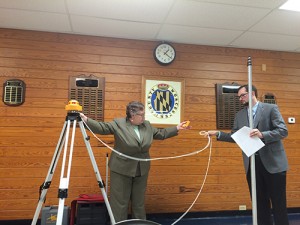
SNOW HILL – A new initiative in Worcester County is giving students the chance to improve their science skills while learning about their local environment.
Thanks to a $285,000 grant, students from Snow Hill Middle School have started an in-depth investigation of Furnace Town. They’re trying to find out whether, given the human-environmental impact on the site, Furnace Town can be a natural environment.
“This is stuff you don’t necessarily get in the classroom,” said Beau Williams, a Snow Hill Middle teacher.
According to Marlyn Barrett, one of the school system’s coordinators of instruction, teachers are tasked through the Chesapeake Bay Watershed Agreement with making sure students are equipped with the knowledge to do an environmental project out in the field.
“It’s important these are local projects,” she said.
The NOAA Bay Watershed Education and Training program, through which the school system was awarded a $285,000 grant, is helping that happen. It’s meant to provide watershed education while developing environmentally literate citizens.
“We competed for this grant for many years and finally got it,” Barrett said. “The idea is to support hands on science and environmental education for students and teachers.”
As this was something new for local educators, it took about a year for them to develop a suitable outdoor experience and curriculum. They were able to put the lesson plan in place this fall though, and students started out by learning the basics in the classroom. They practiced their mapping skills, studied land use and had lessons on pollution for more than a month before they ever even went outside.
“We prep them to be successful in the field which is completely different than being in the classroom,” said Snow Hill Middle School teacher Tiffany Nace.
Students were eventually able to test their newly learned skills in the field with a trip to Furnace Town. Nace said they measured water quality, checked the slope of the land and investigated the various types of fauna they encountered.
“It was amazing,” she said.
Williams said the students would be going back in the spring to collect new data to compare with what they collected this fall. They will then be tasked with publishing their conclusions in some sort of final report or presentation.
Williams and Nace said the project had been well received by students so far.
“This is all in their backyard,” said Nace, “so there’s a reason for them to care about it.”
